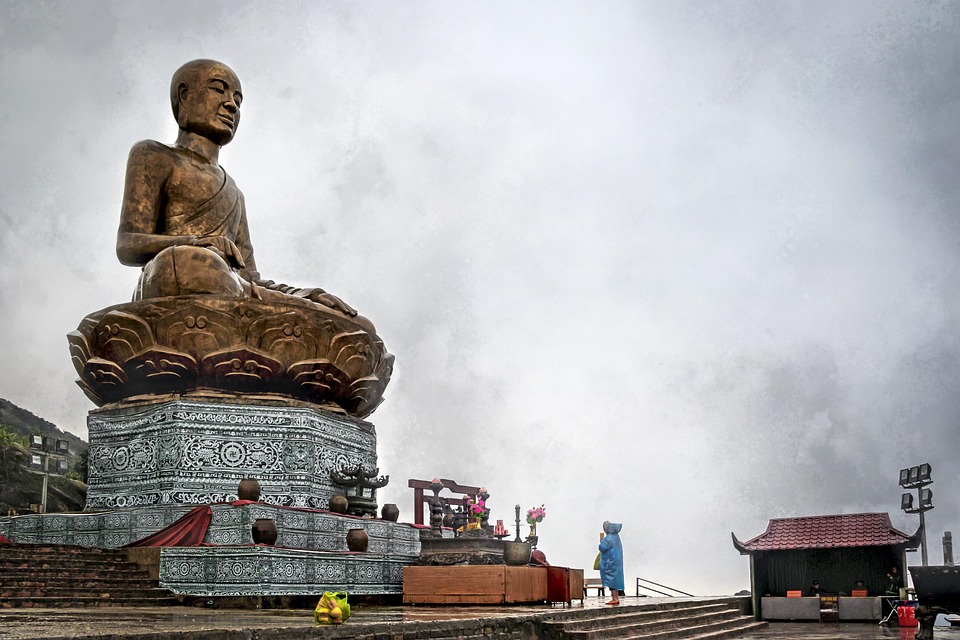Echoes of the Past: How Dardania Shaped the Balkans
Introduction
The Balkan Peninsula, a region steeped in rich history and diverse cultures, has long been a crossroads of civilizations. Among the lesser-known yet significant players in this narrative is Dardania. This ancient region, located in present-day Kosovo and parts of northern Macedonia, has left an indelible mark on the cultural and historical landscape of the Balkans. In this article, we will explore the echoes of Dardania, tracing its influence through history and analyzing how it contributed to the cultural tapestry of the wider Balkan area.
1. The Geographical Context of Dardania
Dardania was situated in a strategic position within the Balkans, bordered by the Roman provinces of Moesia to the north, Macedonia to the south, and Thrace to the southeast. Its geographical diversity, characterized by mountainous terrains and fertile plains, allowed it to be a hub of trade and culture. This geography facilitated interactions between various peoples, including Illyrians, Thracians, Greeks, and later Romans.
1.1 Topography and Its Implications
The region’s mountainous landscape not only provided natural defenses but also served as a barrier that fostered distinct regional identities. The fertile valleys, however, encouraged agriculture and settlement, contributing to Dardania’s economic development. The interplay between its geography and its history is a fundamental aspect of the region’s influence.
2. The Historical Roots of Dardania
2.1 Early Inhabitants
Archaeological evidence points to the presence of prehistoric cultures in Dardania, including the Vinča and Starčevo cultures. By the late Bronze Age, the Illyrians began to settle in the region, establishing the groundwork for what would become the Dardanian identity.
2.2 Rise of the Dardanian Kingdom
By the 4th century BCE, Dardania emerged as a distinct political entity, asserting its power against neighboring tribes and states. The Dardanian Kingdom, under leaders such as Bardylis, managed to expand its territory and influence, engaging in conflicts with the Macedonian Kingdom and aligning itself variably with Greece and Rome.
2.2.1 Interactions with the Macedonian Empire
Dardania’s relationship with the Macedonian Empire was complex, characterized by both conflict and alliance. The Dardanians played a role in the broader struggles for power in the Balkans, affecting the political landscape significantly during the rise of Macedonia under Philip II and Alexander the Great.
3. Dardania and Hellenistic Influence
3.1 Cultural Exchanges
The Hellenistic period marked a significant turning point for Dardania. Following the conquests of Alexander the Great, the region was integrated into the cultural and political influences of the Hellenistic world. This integration led to a blend of Dardanian and Greek cultures, enriching the local traditions.
3.2 Roads and Trade
The establishment of trade routes during this period enhanced Dardania’s role as a connector of various cultures. The famous Via Egnatia, linking Rome to the East, passed through Dardania, facilitating commerce and cultural exchange that would shape the region’s identity.
4. The Romanization of Dardania
4.1 Dardania as a Roman Province
In 50 BCE, Dardania was incorporated into the Roman Empire, eventually becoming a province in its own right. The Roman presence brought about significant changes, including urbanization, infrastructure development, and the spread of Roman law and customs.
4.2 Architectural and Cultural Contributions
Roman architecture left a lasting imprint on Dardania, with the construction of roads, aqueducts, and public buildings. Cities such as Naissus (modern-day Niš) and Ulpiana flourished, becoming important urban centers that attracted diverse populations.
4.3 The Spread of Christianity
The Roman period also saw the spread of Christianity in Dardania, which played a vital role in shaping the region’s spiritual and cultural identity. The establishment of ecclesiastical structures and the eventual rise of the Orthodox Church further influenced the social fabric of Dardania.
5. Dardania’s Legacy Through the Middle Ages
5.1 Byzantine Rule
As the Western Roman Empire fell, Dardania came under Byzantine control. This era saw a continuation of the blending of Eastern and Western influences, with the region becoming a significant part of the Byzantine cultural sphere.
5.2 Slavic Migration
The 6th century brought new dynamics with the Slavic migrations. The settlers adopted and transformed local customs, establishing a Slavic identity in the Balkans, which interacted complexly with the remnants of Roman Dardania.
6. Ottoman Influence and the Transformation of Dardania
6.1 Incorporation into the Ottoman Empire
The fall of Byzantine control in the late 14th century marked the beginning of Ottoman rule in Dardania. The Ottomans implemented a millet system that allowed for the coexistence of various religious and ethnic communities, shaping the multicultural tapestry of the region.
6.2 Religion and Identity
The Ottoman period witnessed significant religious transformations as Islam began to spread in Dardania. The introduction of a new religious and cultural identity further complicated the existing social dynamics, leading to a unique intercultural landscape.
6.3 Architectural and Cultural Flourishing
Under Ottoman rule, Dardania saw a flourishing of Islamic architecture and art. Mosque constructions, such as the Imperial Mosque in today’s Kosovo, became symbols of the era, showcasing the fusion of Islamic and local styles.
7. Modern Times: Dardania in the 20th Century and Beyond
7.1 The Balkan Wars and World War I
The early 20th century was tumultuous for Dardania, as it became embroiled in the Balkan Wars and World War I. These conflicts heightened nationalistic sentiments, leading to significant demographic and political changes.
7.2 The Yugoslav Era
Following World War I, Dardania, as part of the Kingdom of Serbs, Croats, and Slovenes, experienced further sociopolitical shifts. The region, rich in ethnic diversity, often became a focal point for nationalist tensions, particularly between Albanians and Serbs.
7.3 The Kosovo Conflict
The late 20th century saw Dardania at the center of the Kosovo conflict, drawing international attention and culminating in a military intervention by NATO in 1999. The aftermath of the conflict has continued to shape Dardania’s identity and its relationship with the wider Balkans.
8. Contemporary Reflections: Dardania’s Influence Today
8.1 Cultural Heritage and Identity
Today, the cultural legacy of Dardania lives on, influencing art, music, and literature in the Balkans. Efforts to preserve this heritage amidst modern challenges are crucial for fostering a sense of identity among the local population.
8.2 Political Dynamics
Dardania’s historical significance continues to resonate in contemporary politics, with ongoing discussions about statehood, ethnic rights, and reconciliation in the region. The challenges and opportunities that arise from Dardania’s past play a pivotal role in shaping the aspirations of its peoples.
8.3 Economic Development
With a young population and a growing economy, Dardania faces both challenges and potential. Initiatives aimed at enhancing economic ties within the Balkans, leveraging its historical connections, could pave the way for a prosperous future.
Conclusion
Dardania, with its complex and multifaceted history, has significantly shaped the cultural and geopolitical landscape of the Balkans. Understanding its echoes in history helps illuminate the broader narratives of the region, highlighting the intertwined destinies of its peoples. As the Balkans navigate a path toward unity and reconciliation, the lessons from Dardania’s past are invaluable in forging a collective future.
Footnotes
For a comprehensive guide on Dardania and its implications in the Balkans, see:
- Šašel Kos, Marija. “Dardania in the Middle Ages: A Historical Overview.” Journal of Balkan Studies, 2015.
- Jevtić, Milan. “Geography and Cultural Formation of Dardania.” Geographical Review of the Balkans, 2017.
- Laban, Marko. “The Roman Influence on Dardania.” Romanian Journal of Archaeology, 2018.
- Petkovski, Aleksandar. “Dardania: From Antiquity to the Modern Era.” The Balkan Historian, 2019.
- Nuhija, Arben. “Ethnic Relations in Dardania During the Ottoman Era.” International Journal of Balkan Studies, 2020.
- Kaki, Lira. “The Kosovo Conflict and Its Aftermath.” Balkan Politics Review, 2021.
- Mujezinovic, Zahir. “Dardania’s Role in Contemporary Balkan Dynamics.” Journal of Contemporary Balkan Issues, 2022.
Note
The above article is an overview intended to provide a foundational understanding. For deeper insights, readers are encouraged to consult the sources listed in the footnotes.


























Add Comment